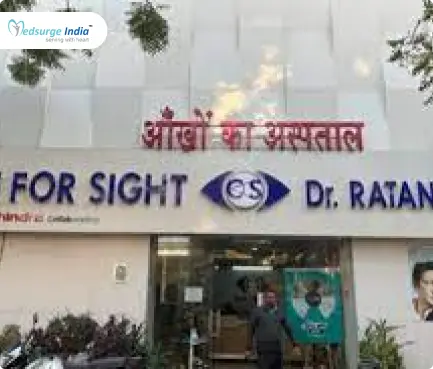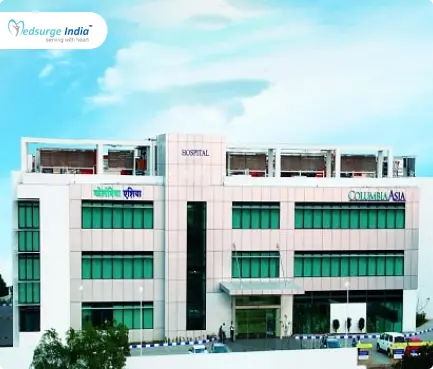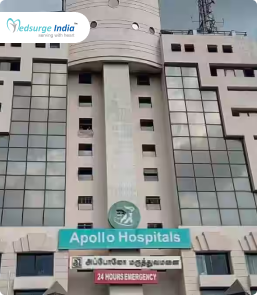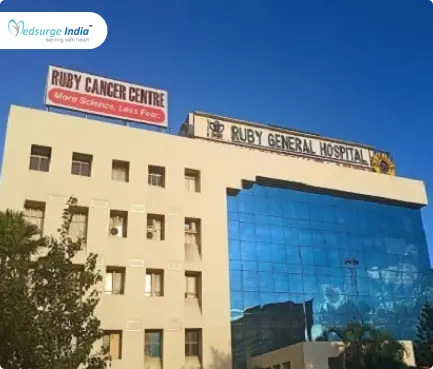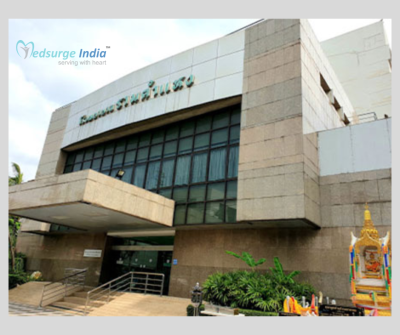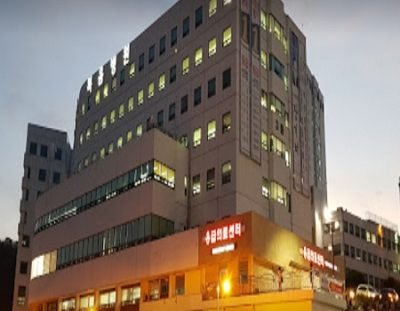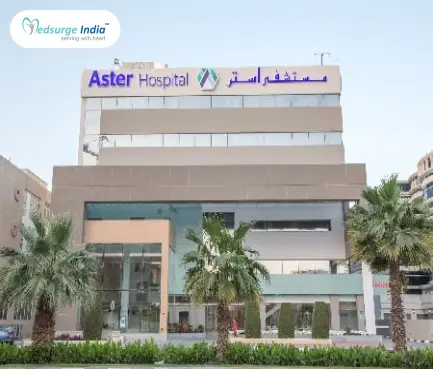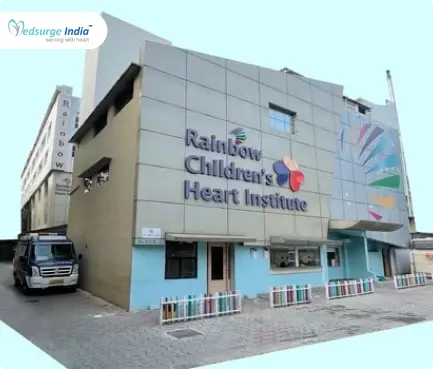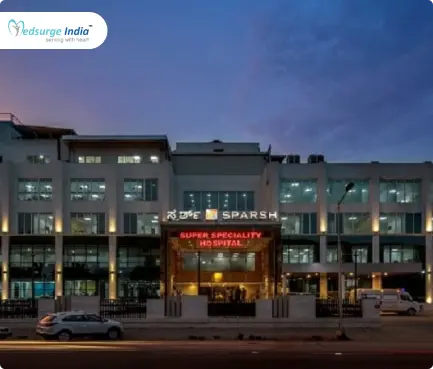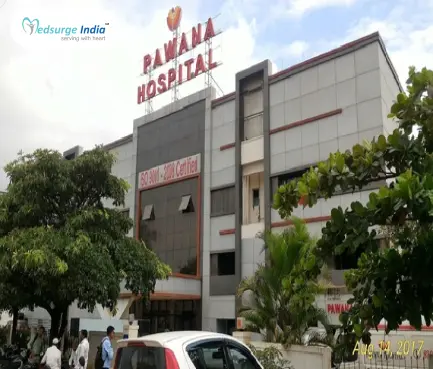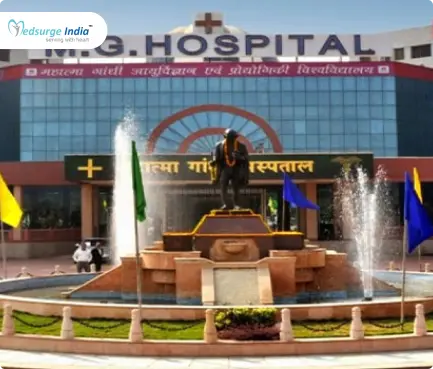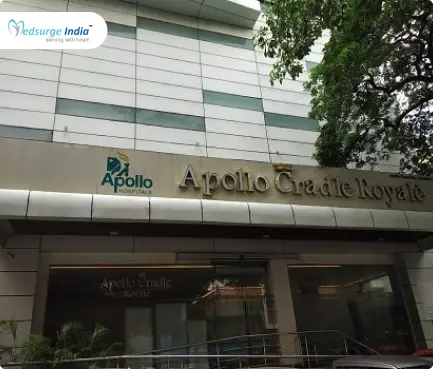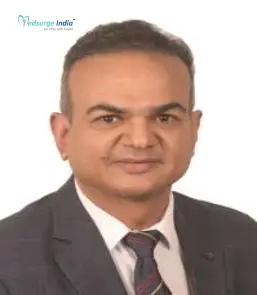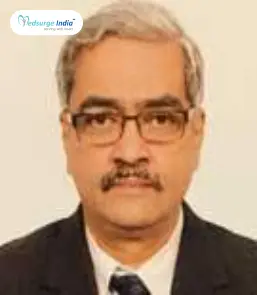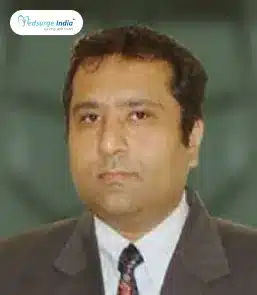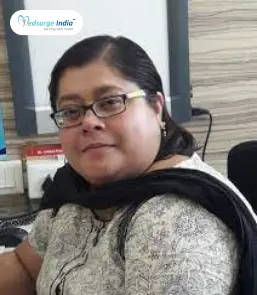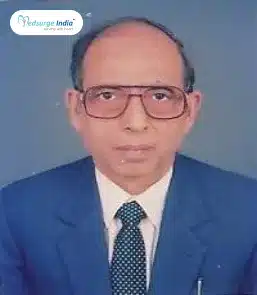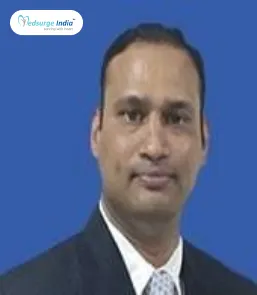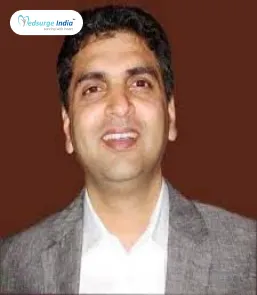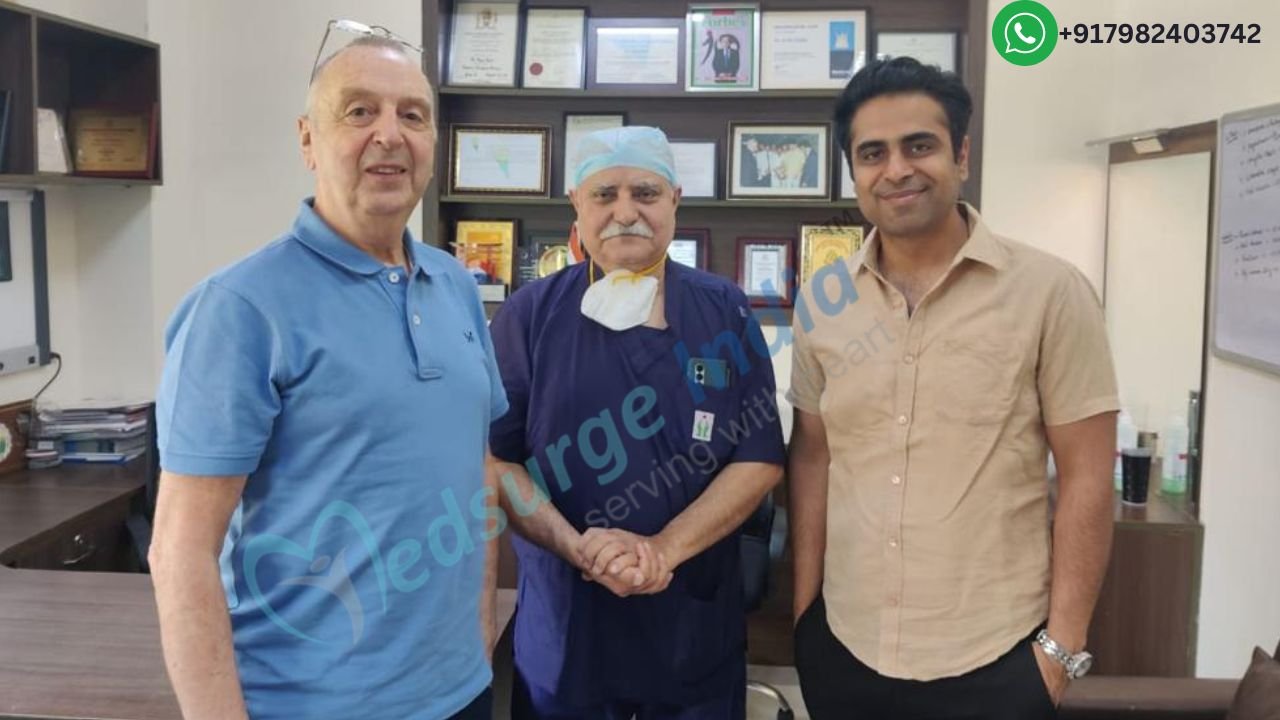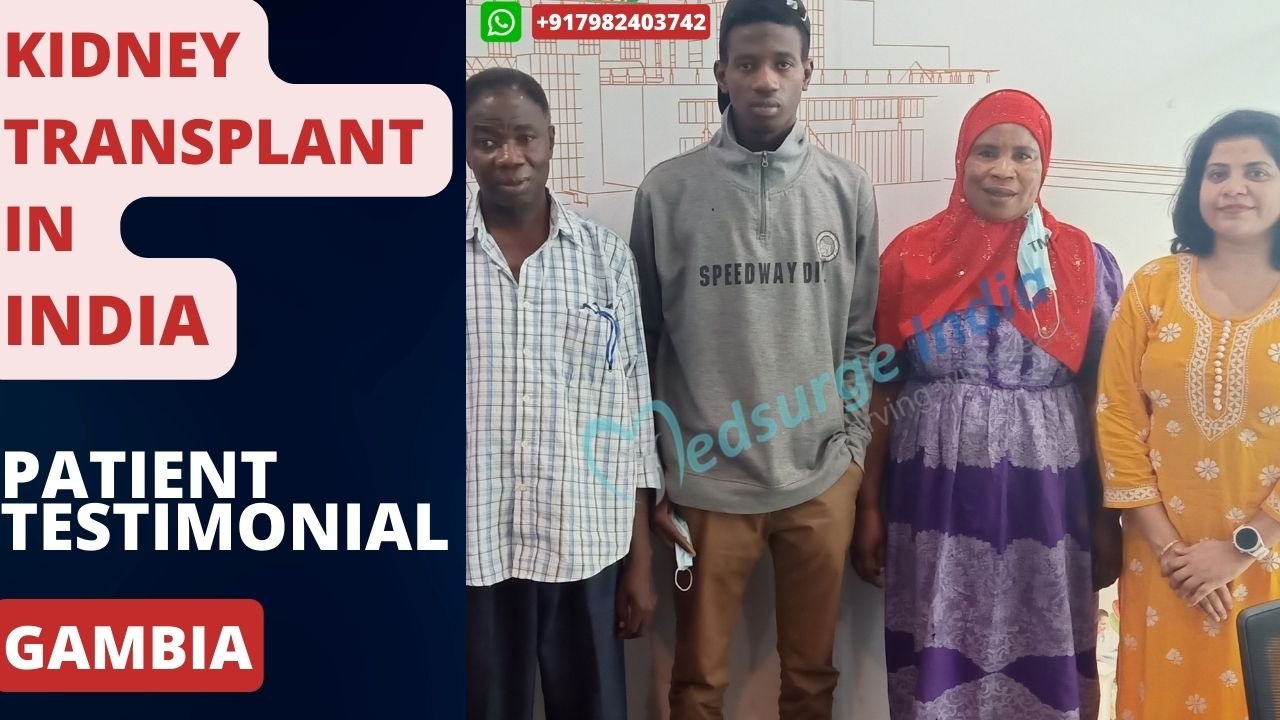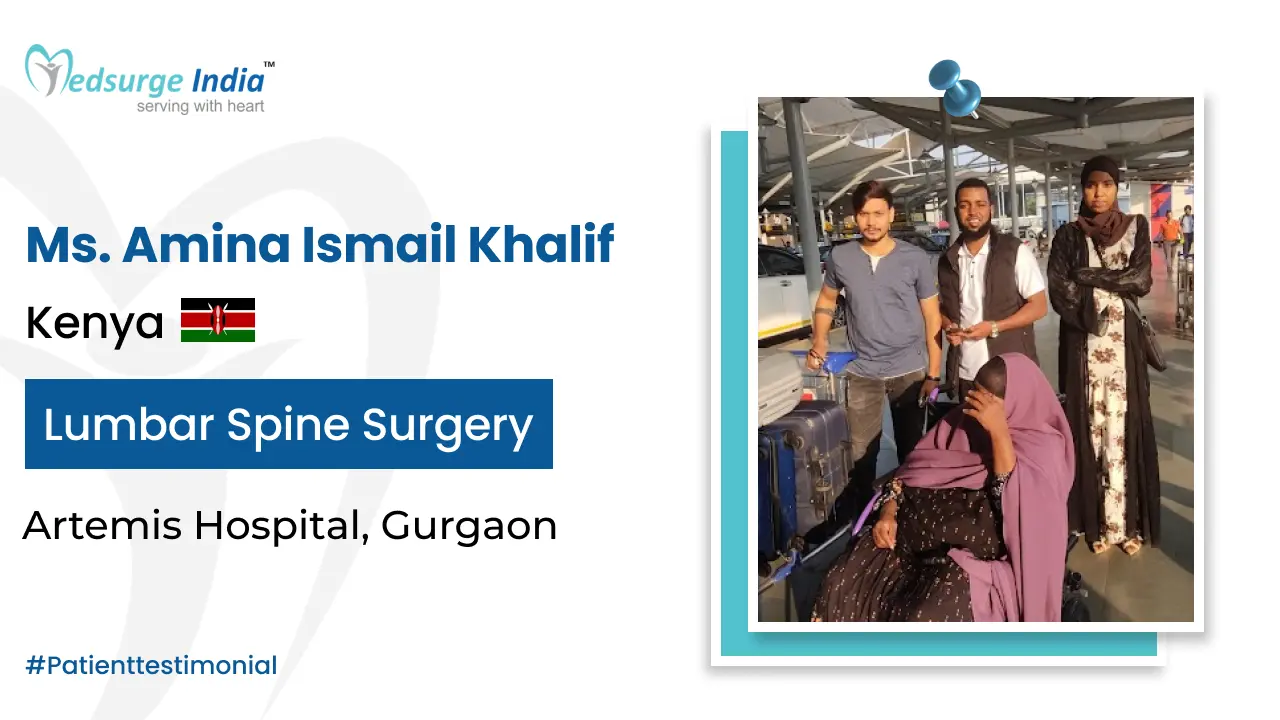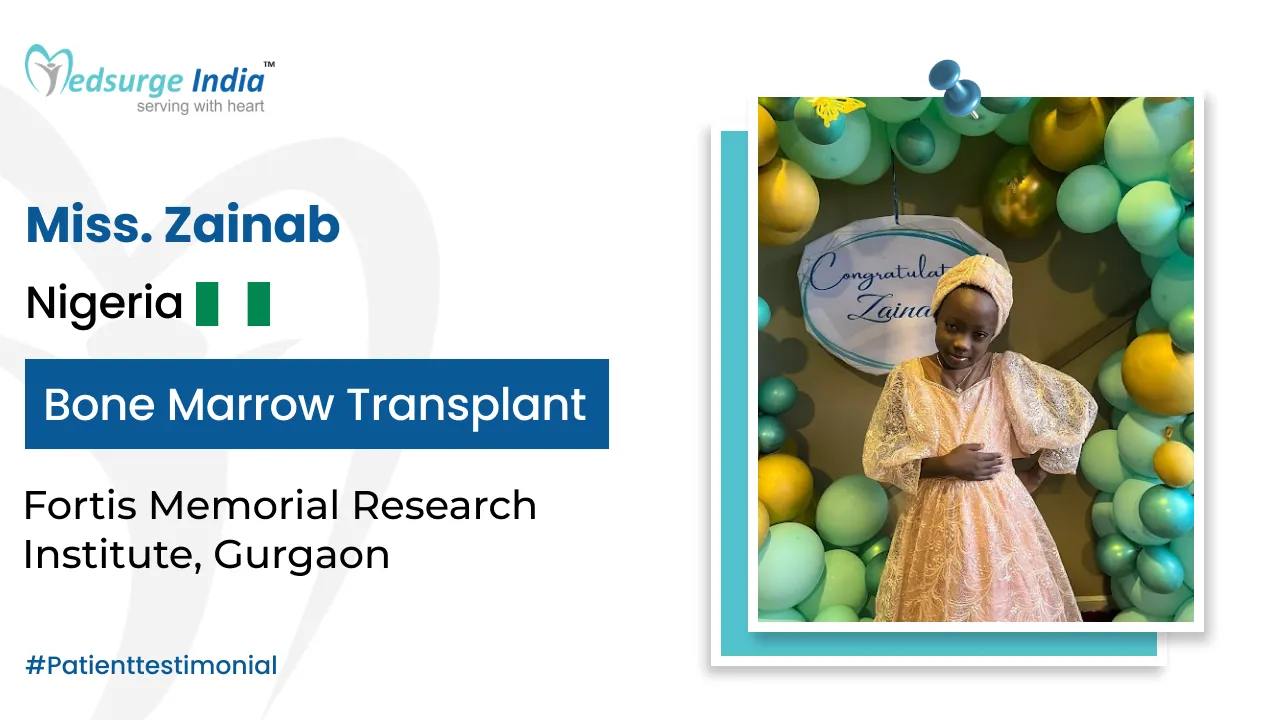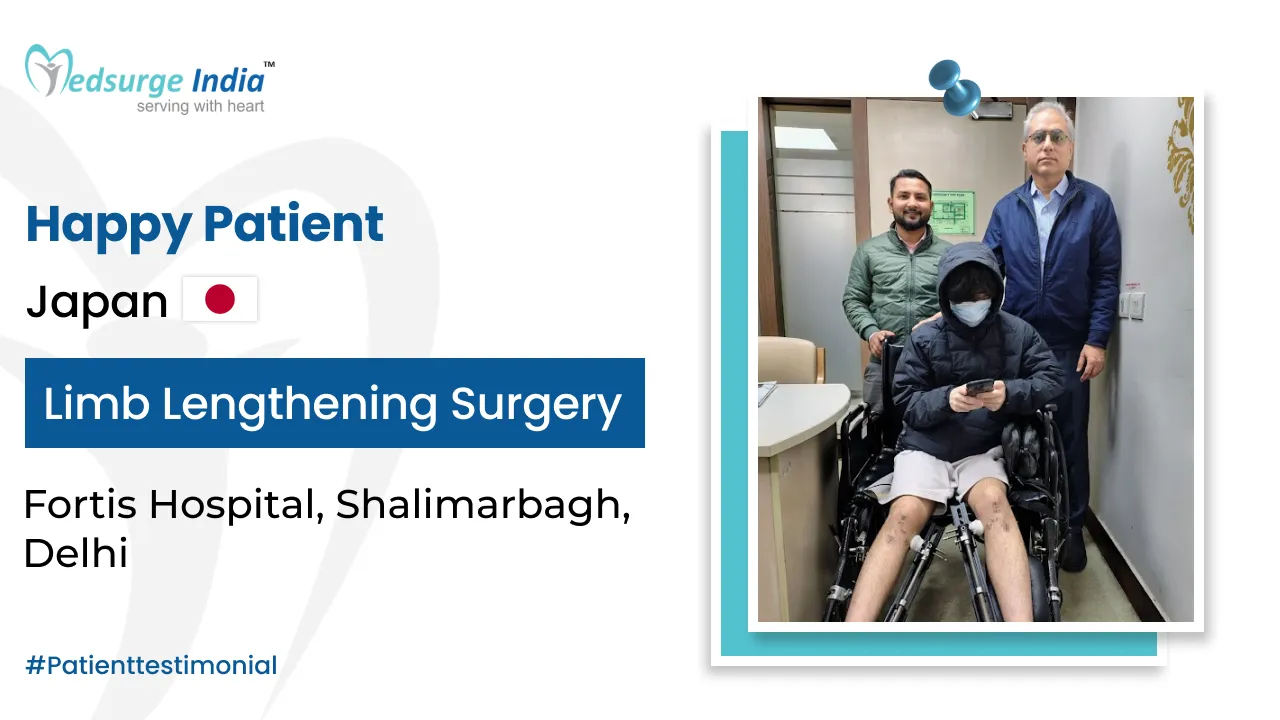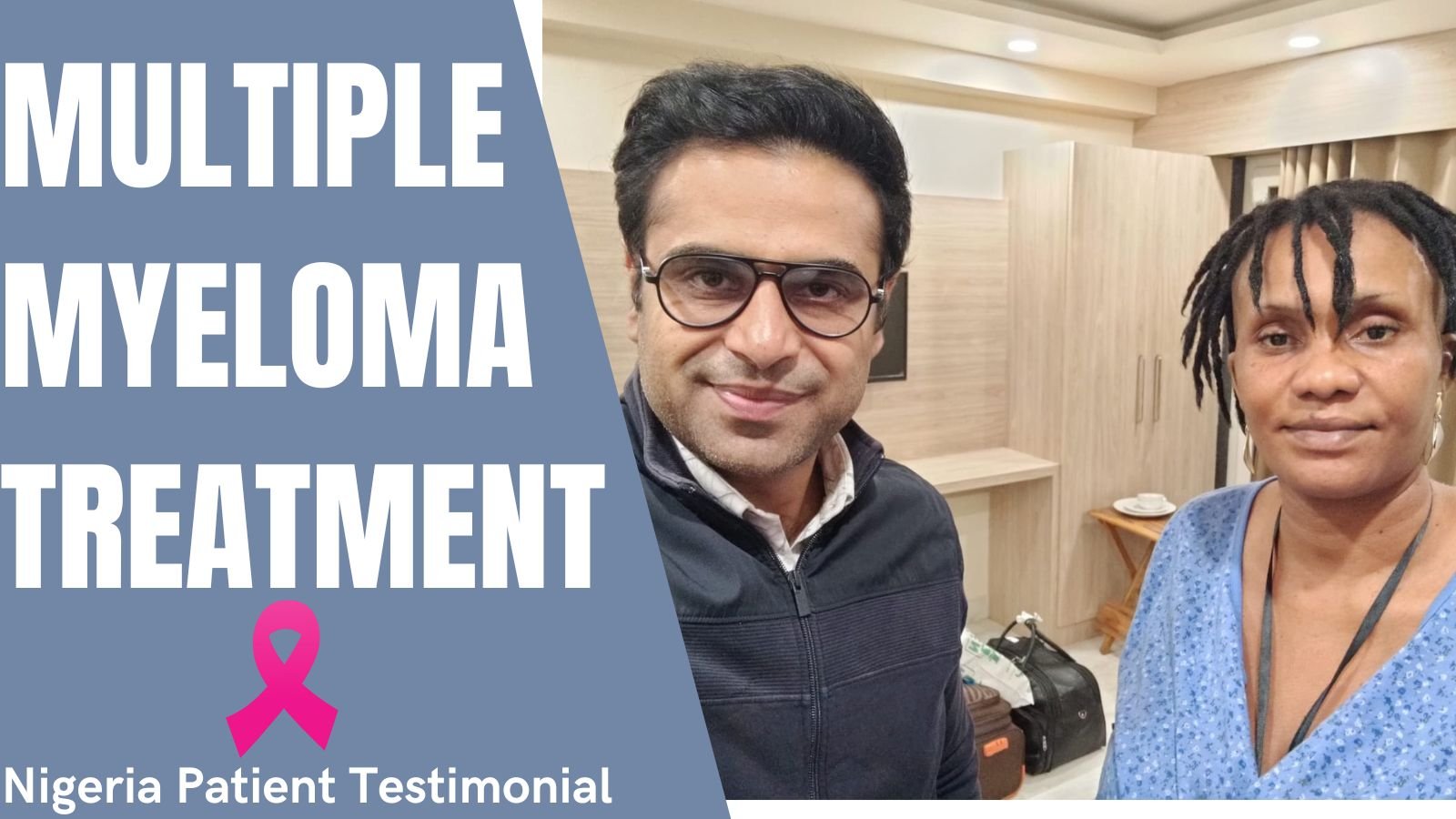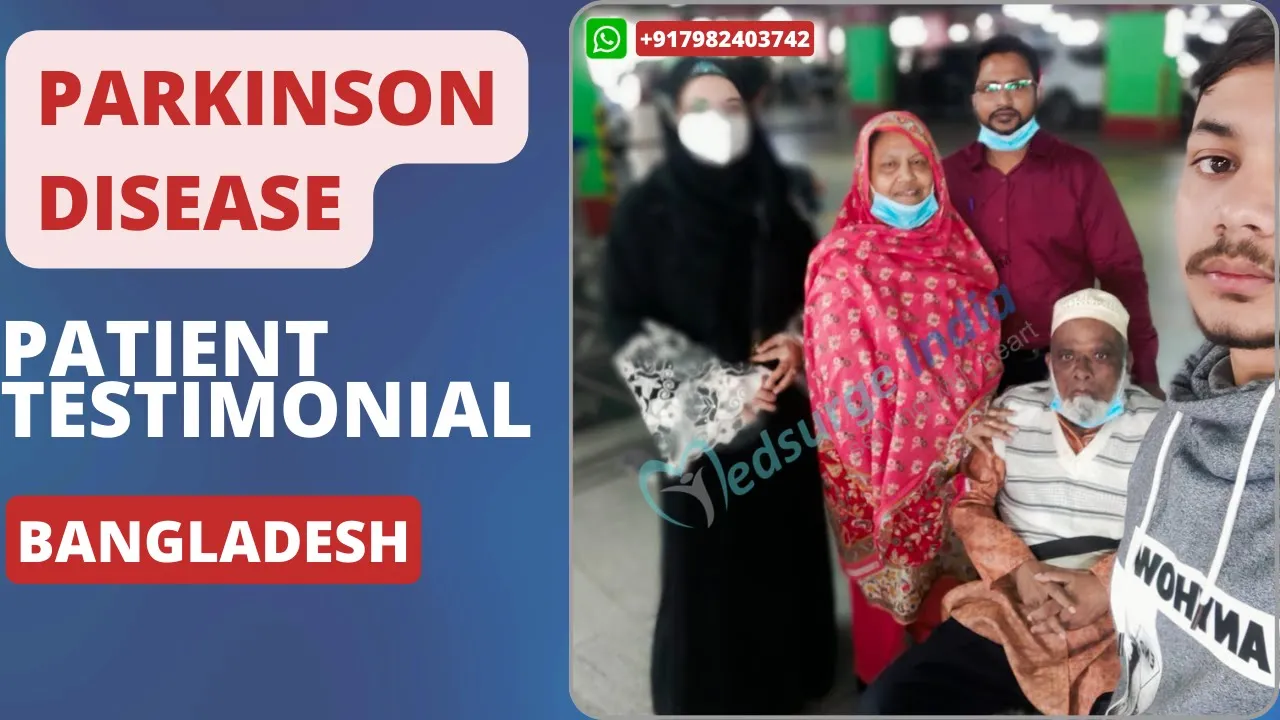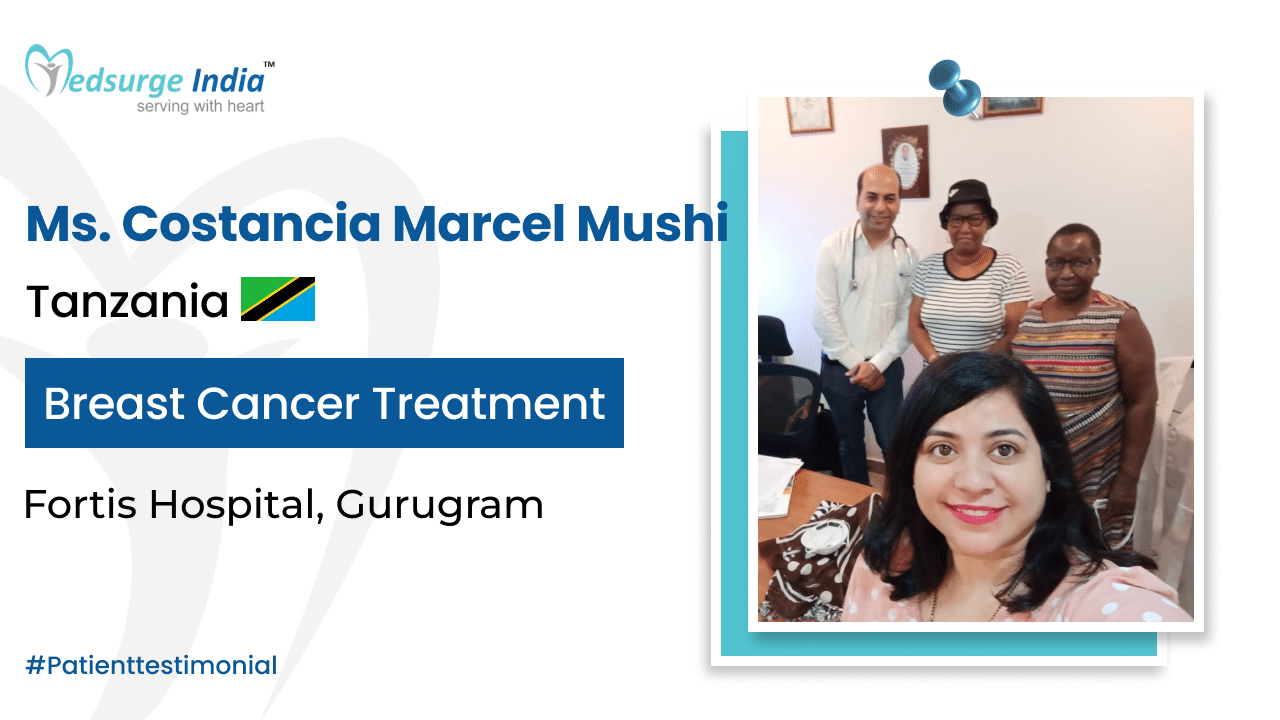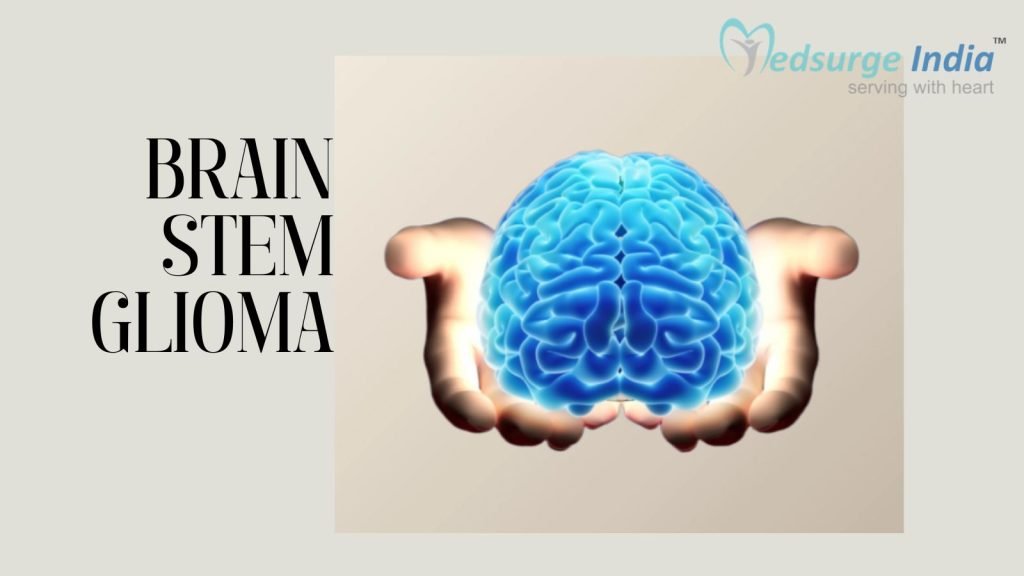
A tumor that develops in the brainstem’s tissues is known as a brain stem glioma. Glial cells develop into gliomas. In the brain, glial cells support and nourish nerve cells, provide them with food and oxygen, and aid in their defense against infection. Patients who come for treatment in India for brain stem glioma can have access to a variety of therapy options. Standard therapies and clinical trials are both used to examine various treatments. Radiation therapy is frequently employed to treat brainstem gliomas.
When compared to other industrialized countries, India’s cost of Brainstem Glioma treatment is affordable. The success may be partially attributed to the skill of the oncologists and surgeons as well as the state-of-the-art medical equipment used in the best Indian facilities. In addition to these advantages, India is very well-liked because of its low costs without lowering clinical standards.
What Is Brain stem Glioma?
All gliomas that are found in the brainstem are collectively referred to as brainstem gliomas. These tumors can range in grade from I to IV and are typically astrocytomas. These tumors’ position in the brainstem, which regulates several vital processes including breathing, swallowing, and heart rate, necessitates specific therapeutic considerations. The behavior of astrocytomas that form in various parts of the brainstem varies greatly from one another.
Midbrain and Medulla Gliomas, which are the top and bottom portions of the brainstem, respectively, are often low-grade gliomas (grade I). On the other hand, tumors that develop in the pons (the center of the brainstem) are frequently grade IV tumors and advance significantly more quickly. It is yet unclear why these tumors in this area of the brain are growing so quickly.
Brainstem gliomas can be divided into two kinds based on their aggressiveness and rate of growth:
- A diffuse intrinsic pontine glioma (DIPG) spreads across the brainstem and develops extremely fast.
- A focal glioma is a kind of brain tumor that develops slowly and tends to remain in one location of the brainstem. Compared to DIPG patients, those with this kind had a better prognosis.
The majority of brainstem gliomas affect youngsters. Brainstem gliomas make up between 10 and 20 percent of all pediatric brain tumors.
Brain stem Glioma Treatment Cost In India
Brain stem Glioma treatment cost in India starts from INR 5,41,000 (6,500 USD). In India, the expense of brainstem glioma is quite affordable in contrast to other nations. Additionally, the level of medical treatment and services is on par with that of the greatest hospitals in the world in terms of quality and standard and with travel, and lodging.
The price of a medical package in India may differ based on several variables, including the type of therapy, the method employed, the hospital and location of choice, the doctor’s qualifications, and more. Numerous individuals from all over the world go to India for medical care for this reason, which is the main one.
What Are the Signs and Symptoms of Brain stem Glioma?
The location, size, and age of the tumor are only a few of the many variables that might affect a person’s symptoms. The following signs may appear when a brainstem glioma develops and places pressure on adjacent structures and brain tissue:
- Facial numbness
- Dysarthria
- Dysphagia
- Deteriorating handwriting
- Diplopia
- Ataxia and weakness
- Inability to thrive
A brainstem glioma expands, taking up more room inside the hard skull. The inability of the skull to expand causes a rise in intracranial pressure, which can cause :
- headaches
- nausea
- vomiting and
- sleepiness
Brainstem glioma-related headaches often start when you get up in the morning and become better during the day. Hydrocephalus can occur in people whose brainstem gliomas grow into the fourth ventricle. The tumor prevents the cerebrospinal fluid’s normal cycle from cycling, which results in hydrocephalus (CSF). Higher internal head pressure may result from hydrocephalus.
How Is Brain stem Glioma Diagnosed?
In order to diagnose brain stem glioma and make care decisions for the patient, many tests are utilized. Not every test on this list will be administered to every individual. When selecting a diagnostic test for the patient, the doctor may take these things into account:
- The probable tumor type
- Indications and symptoms
- The age and overall health
- the findings of previous medical testing
A brain stem glioma can be identified using the following tests in addition to a physical examination:
- Scan using computed tomography (CT or CAT): A CT scan uses x-rays captured at various angles to create images of the inside of the body. A computer combines these photos to produce a comprehensive, three-dimensional image that highlights any irregularities or cancers. The size of the tumor may be assessed via a CT scan. Before the scan, a contrast agent may be administered to improve the image’s clarity. This dye can be administered intravenously or as a tablet or liquid for ingestion. This test typically does not give enough data to definitively diagnose a brain stem glioma, necessitating an MRI.
- MRI: Instead of using x-rays, an MRI creates precise pictures of the body using magnetic fields. To provide a clearer image, a special dye called a contrast medium is introduced before the scan. This dye can be administered as a tablet for ingestion or as an injection into the patient’s vein.
- Biopsy: A biopsy is the removal of a tiny sample of tissue for microscopic analysis. A biopsy is often not performed for the more prevalent, diffuse kind of brain stem tumor, as was previously stated. However, it is frequently used to identify the kind of tumor in focal tumors. A specialist known as a neurosurgeon will attempt to remove a little portion of brain tissue. A neurosurgeon is an expert in doing surgery to remove cancers of the central nervous system (CNS). The material is next examined by a pathologist. A pathologist is a medical professional who focuses on analyzing lab results and assessing cells, tissues, and organs to identify diseases.
How Is Brain stem Glioma Graded?
The grade refers to how similar healthy cells and malignant cells appear under a microscope. The surgeon contrasts the tissue of the tumor with healthy tissue. Various cell types are often clustered together in healthy tissue. Differentiated or low-grade tumors are those whose tumor tissue resembles healthy tissue and has many cell groupings. The term “poorly differentiated” or “high-grade tumor” refers to a tumor whose tissue seems significantly different from healthy tissue. The grade of the tumor may assist the doctor in estimating how rapidly it may spread.
The following are the broad categories for brain stem glioma:
- Focal brain stem glioma: 20% of brain stem cancers are localized, which means they only affect a single location or a tiny section of the brain stem. Instead of the pons, they often occur in the midbrain or medulla. Typically, they are benign or low-grade tumors. The tumor cells appear more like healthy cells and are less aggressive.
- Recurrent brain stem glioma: A tumor that has returned despite therapy is known as recurrent brain stem glioma. There will be more testing to determine the amount of tumor recurrence if it happens.
- Diffuse brain stem glioma: This kind of brain stem glioma is the most prevalent. This kind of tumor frequently invades the medulla, midbrain, or other surrounding regions of the brain in addition to freely spreading throughout the pons. These tumors often have a high grade. They have cells that have an odd appearance and are exceedingly aggressive. If a biopsy was performed, a diffuse brain stem glioma may be further categorized by a particular genetic alteration termed H3 K27M in the tumor cells.
Helpful – Neurosurgery Cost in India
Get Free Cost Estimation
Procedure
What Are the Types of Treatments Done for Brain stem Glioma?
The kind and grade of the tumor, potential side effects, the preferences of the family, and the patient’s general health are just a few of the variables that might affect the recommended course of treatment. Radiation therapy, chemotherapy, and surgery are the three major treatment modalities for brain stem glioma. These therapies are occasionally combined. Below are descriptions of the typical types of therapies used to treat brain stem glioma.
Radiation Therapy:
X-rays and other high-energy particles are used in radiation treatment to destroy cancer cells. The most popular kind of treatment for brain stem glioma is radiation therapy.
Chemotherapy:
Drugs are used in chemotherapy to destroy cancer cells. Systemic therapy refers to a method of treating cancer that eliminates cancer cells throughout the body. Brain stem glioma cannot be effectively treated with chemotherapy alone, although in some circumstances, chemotherapy may be administered before, during, or after radiation therapy.
Targeted Therapy:
A treatment known as targeted therapy specifically targets cancer’s unique genes, proteins, or the tissue environment that promotes the growth and survival of the disease. This form of therapy prevents the development and spread of cancer cells while minimizing harm to healthy cells. The targets of every tumor vary.
Surgery:
Surgery involves the removal of the tumor along with part of the surrounding healthy tissue. Only when the brain stem glioma becomes localized on an MRI scan is surgery utilized to treat it. This indicates that in some cases, such as when a tumor develops out from the brain stem rather than into the brain stem, it may be possible to remove the tumor without harming the brain.
Note: Due to the location of the tumor and the associated danger, surgery is typically not advised or an option for children with diffuse kinds of brain stem gliomas. This kind of tumor is sometimes referred to as inoperable or unresectable. Other forms of therapy will be suggested by the doctor.
How to Choose a Hospital In India For Brain stem Glioma Treatment?
Hospitals in India that treat patients with brainstem gliomas are renowned for their warmth and attentiveness. These hospitals have some of India’s top neurosurgeons who are experts in their professions. For an overseas patient, selecting a good hospital for treatment might be challenging. It is a crucial choice that has to be made while keeping a number of things in mind, such as:
- Quality certificates and accreditations
- Hospital and transportation facility location
- Team of doctors and surgeons
- Advanced diagnostic and therapeutic equipment
- International patient assistance
How Can Medsurge India Help?
Medsurge India is a prestigious support system for patients looking for doctors, hospitals, and specialized treatments. We’ll find the most suitable medical options for you. Regarding your medical issues, our team will give you a list of certified, reputable, and trusted doctors and hospitals. Additionally, we offer a treatment strategy that fits your budget. Apart, we assist patients with obtaining travel authorizations, medical visas, and a multitude of other things.
Watch Video – Domestic Video Patient Testimonial | Brain Tumor Surgery
The Most Important Frequently Asked Questions
Q1: Is It Possible to Remove a Brain Stem Tumor?
A1: Only when the brain stem glioma becomes localized on an MRI scan is surgery utilized to treat it. This indicates that in some cases, such as when a tumor develops out from the brain stem rather than into the brain stem, it may be possible to remove the tumor without harming the brain.
Q2: How Long Is It Possible to Survive with Only a Brain Stem?
A2: Within six months following the initial brain trauma, the majority of those who stay in a vegetative state pass away.
Q3: How Quickly Do Gliomas Expand?
A3: These malignancies have a daily growth rate of 1.4%. Although the development is tiny, a glioblastoma tumor may double in size in just seven weeks (median time). By contrast, the median time to double in size for the fastest-growing lung tumors is 14 weeks.
Q4: What Glioma Is the Most Dangerous?
A4: Glioblastoma multiforme, also known as high-grade astrocytomas, is the most dangerous kind of all brain tumor. The symptoms of glioblastoma are frequently the same as those of other gliomas.
Q5: What Occurs Following Brain Stem Death?
A5: When the brain stem, a component of the brain, stops functioning, this is known as brain stem death. The person will never be able to be awake or breathe without a machine if the brain stem ceases functioning (ventilator).
Top Hospitals for Brain Stem Glioma Treatment in India
Top Doctors for Neurology And Neurosurgery
Dr. Debashis Bhattacharyya
Senior Consultant
Experience: 14+ years of experience
Narayana Multispeciality Hospital, Andul Road, Howrah
Howrah, India
Dr. Biplab Das
Consultant
Experience: 12 years of experience
Batra Hospital & Medical Research Centre, New Delhi
New Delhi, India
Dr. T.K. Banerjee
Consultant
Experience: 28 years of experience
AMRI Hospital, Kolkata (Dhakuria)
Kolkata, India
Dr. Prasanna K L
Senior Consultant
Experience: 29+ years of experience
Sahyadri Narayana Multispeciality Hospital, Harakere, Shimoga
Shimoga, India
Dr. S Chittrambalam
Senior Consultant , MBBS, MD, DM
Experience: 33 years of experience
Chennai, India
Dr. Sitansu Sekhar Nandi
Consultant
Experience: 23 years of experience
AMRI Hospital, Kolkata (Dhakuria)
Kolkata, India
Dr. Sudhir Dubey
Associate Director
Experience: 28 years of experience
Medanta – The Medicity, Gurgaon
Gurgaon, India
Dr. Senthilnathan J
Consultant
Experience: 16 years of experience
Kauvery Hospital Formely Fortis Hospital, Vadapalani
Chennai, India
Dr. Gulshan Kumar Ahuja
Senior Consultant
Experience: 57 years of experience
Indraprastha Apollo Hospital New Delhi
New Delhi, India
Dr. Rajasekhar Reddy K
Consultant , MBBS, MS, MCh
Experience: 25 years of experience
Continental Hospitals, Hyderabad
Hyderabad, India
Dr. Praveen Gupta
Director , MBBS, MD, DM
Experience: 16 years of experience
Fortis Memorial Research Institute, Gurgaon
Gurgaon, India

